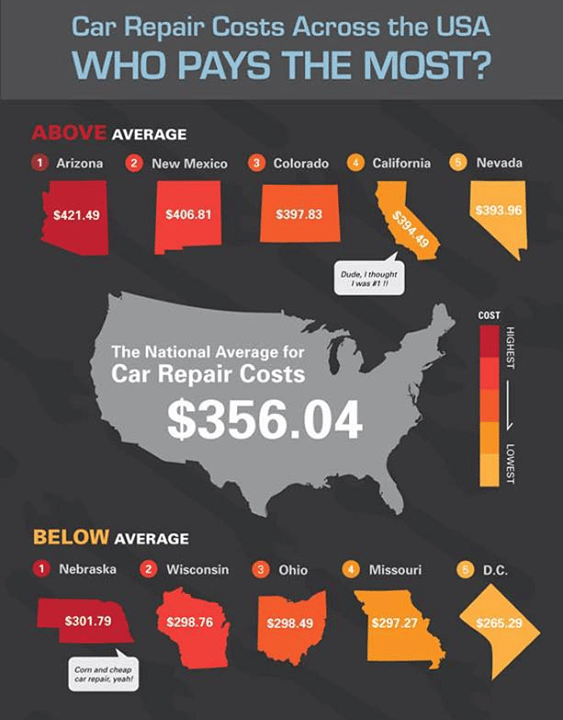Recognizing Your Car'S Caution Lights: What Do They Truly Mean?
Recognizing Your Car'S Caution Lights: What Do They Truly Mean?
Blog Article
Content Writer-Samuelsen Gilbert
When you're behind the wheel, those radiant caution lights on your control panel can be a bit complicated. Do you understand what they're trying to inform you regarding your vehicle's health and wellness? Understanding the importance of these lights is crucial for your security and the longevity of your vehicle. So, https://brake-change05949.blogripley.com/31831979/resolving-the-most-prevalent-myths-connected-to-auto-repair-service following time among those lights pops up, wouldn't you want to analyze its message precisely and take the required steps to resolve it?
Common Warning Lights and Interpretations
Determine typical caution lights in your automobile and recognize their definitions to make sure secure driving.
One of the most common caution lights include the check engine light, which indicates issues with the engine or exhausts system. If this light comes on, it's vital to have your vehicle inspected quickly.
The oil pressure warning light shows reduced oil stress, needing instant attention to avoid engine damage.
A flashing battery light could recommend a malfunctioning billing system, possibly leaving you stranded otherwise dealt with.
The tire stress surveillance system (TPMS) light informs you to reduced tire pressure, impacting vehicle security and gas efficiency. Neglecting this could result in dangerous driving conditions.
The abdominal muscle light suggests a problem with the anti-lock stopping system, endangering your capability to stop quickly in emergencies.
Lastly, the coolant temperature level cautioning light warns of engine overheating, which can result in severe damage otherwise fixed promptly.
Comprehending these usual caution lights will certainly assist you resolve issues without delay and preserve risk-free driving conditions.
Importance of Prompt Attention
Comprehending the typical caution lights in your auto is only the initial step; the relevance of immediately resolving these cautions can't be highlighted enough to ensure your safety and security when traveling.
When a caution light brightens on your control panel, it's your car's means of communicating a potential problem that requires interest. Overlooking these warnings can result in a lot more severe issues in the future, endangering your safety and security and potentially costing you much more in repairs.
https://ecu-tuning-software-free27261.madmouseblog.com/11739377/leading-10-tips-for-picking-the-best-car-repair-shop-near-you to alerting lights can prevent break downs and accidents. For instance, a flashing check engine light can suggest a misfire that, if left unattended, might trigger damages to the catalytic converter. Addressing this promptly can conserve you from a pricey repair work.
Likewise, a brake system alerting light could signify low brake liquid or worn brake pads, crucial parts for your security when driving.
DIY Troubleshooting Tips
If you notice a warning light on your control panel, there are a few do it yourself fixing suggestions you can attempt prior to seeking specialist help.
The initial step is to consult your car's handbook to recognize what the certain warning light indicates. Occasionally https://brakeshopnearme73950.wizzardsblog.com/31177477/captivated-by-the-typical-false-impressions-about-vehicle-detailing-explore-the-facts-behind-these-misconceptions-and-find-out-how-specialist-outlining-can-benefit-every-automobile-proprietor can be as easy as a loosened gas cap activating the check engine light. Tightening up the gas cap might fix the trouble.
One more typical problem is a reduced battery, which can cause different advising lights. Examining the battery connections for deterioration and ensuring they're safe might take care of the problem.
If a caution light continues, you can attempt resetting it by disconnecting the vehicle's battery for a few mins and afterwards reconnecting it. Additionally, examining your car's fluid levels, such as oil, coolant, and brake fluid, can help fix alerting lights connected to these systems.
Verdict
Finally, understanding your auto's caution lights is vital for keeping your automobile running efficiently and securely. By immediately dealing with these alerts and understanding what they suggest, you can stay clear of costly repair work and possible failures.
Remember to consult your cars and truck's manual for specific details on each cautioning light and take action accordingly to make certain a hassle-free driving experience.
Remain informed, remain safe when traveling!
